site search
online catalog
“FOUR-FOOT WHITE” CIVIL WAR SIGNAL FLAG WITH A POST-WAR ID
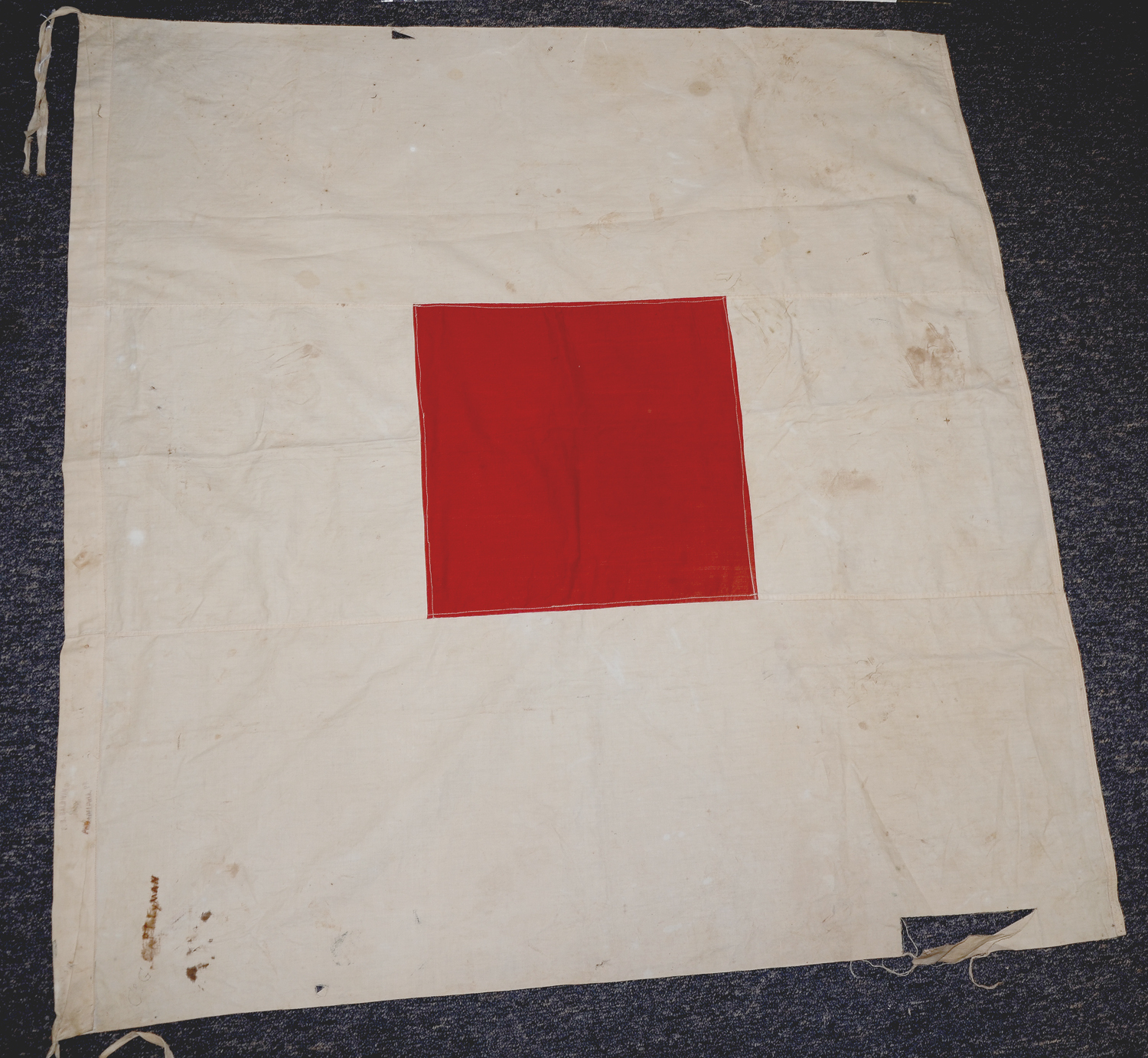
Hover to zoom

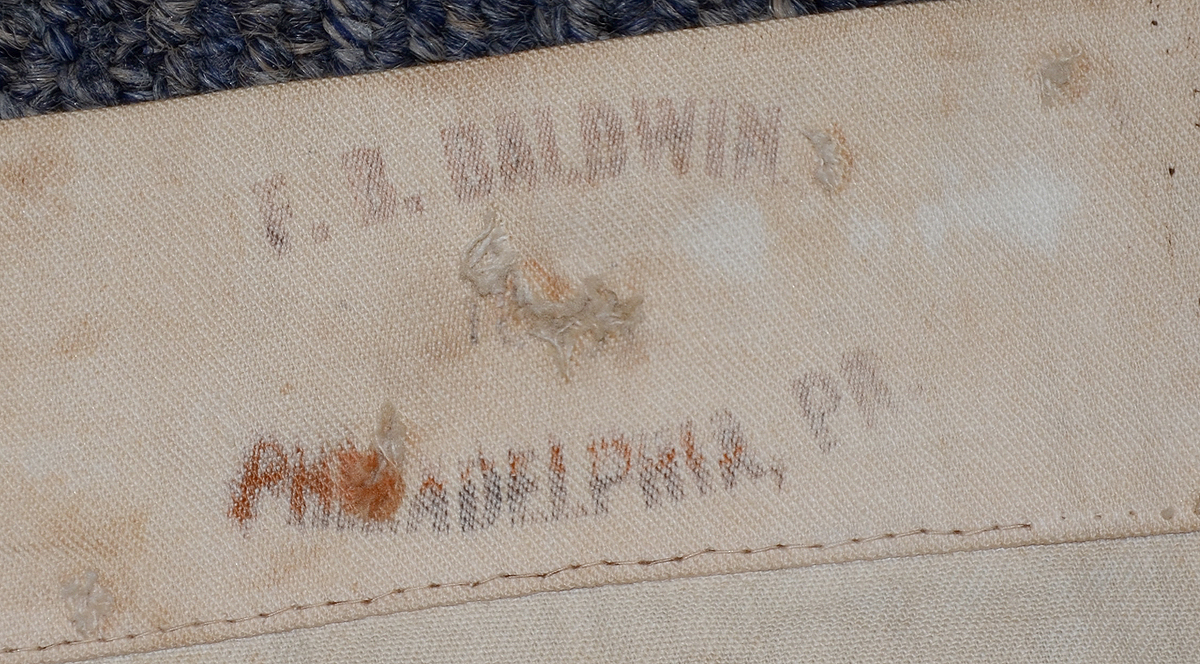
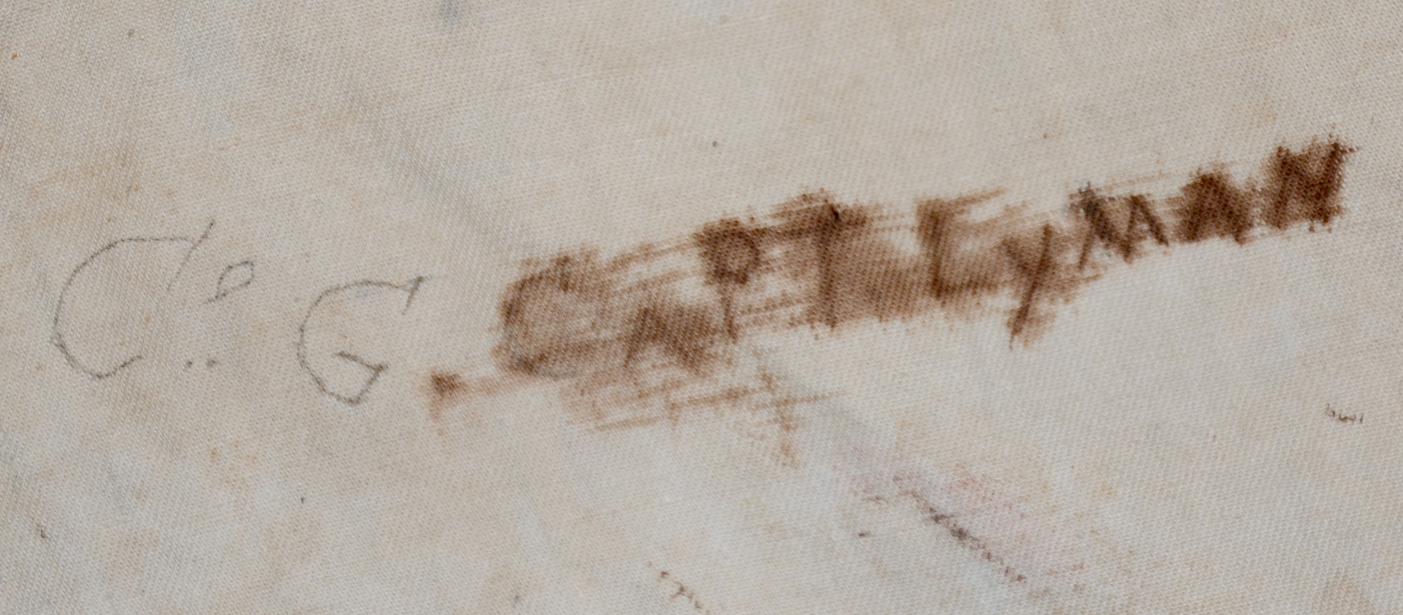
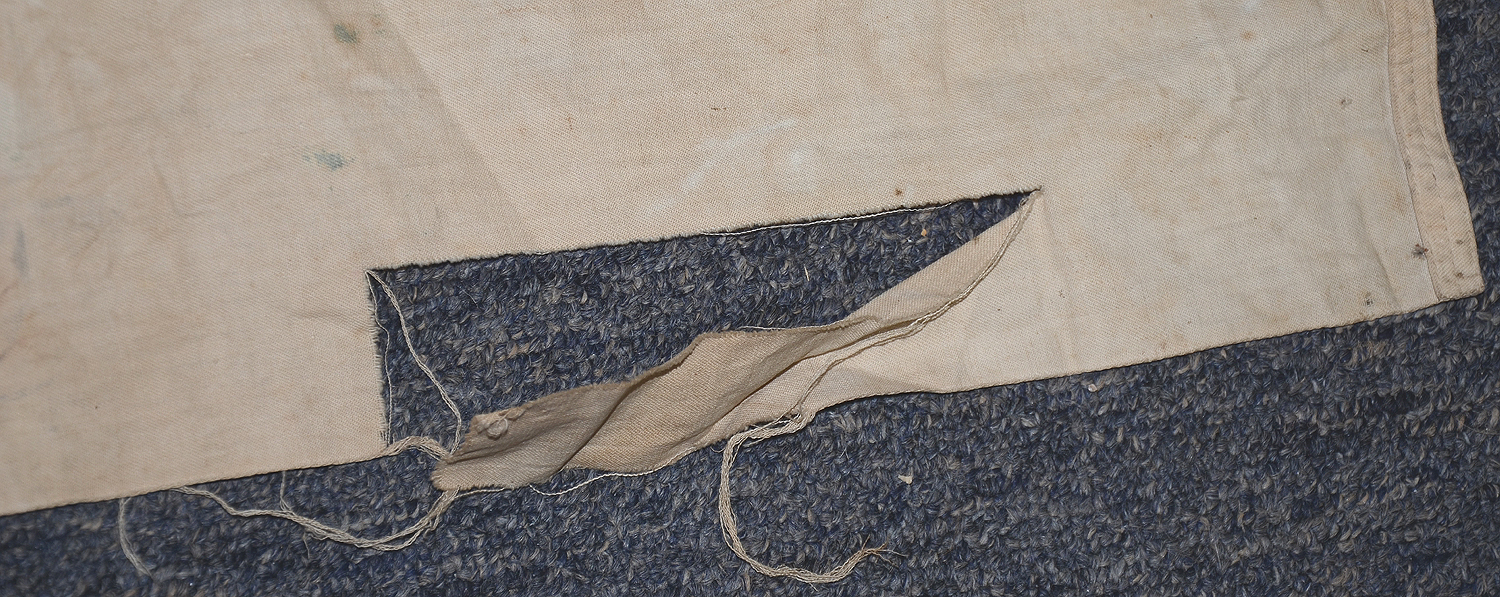
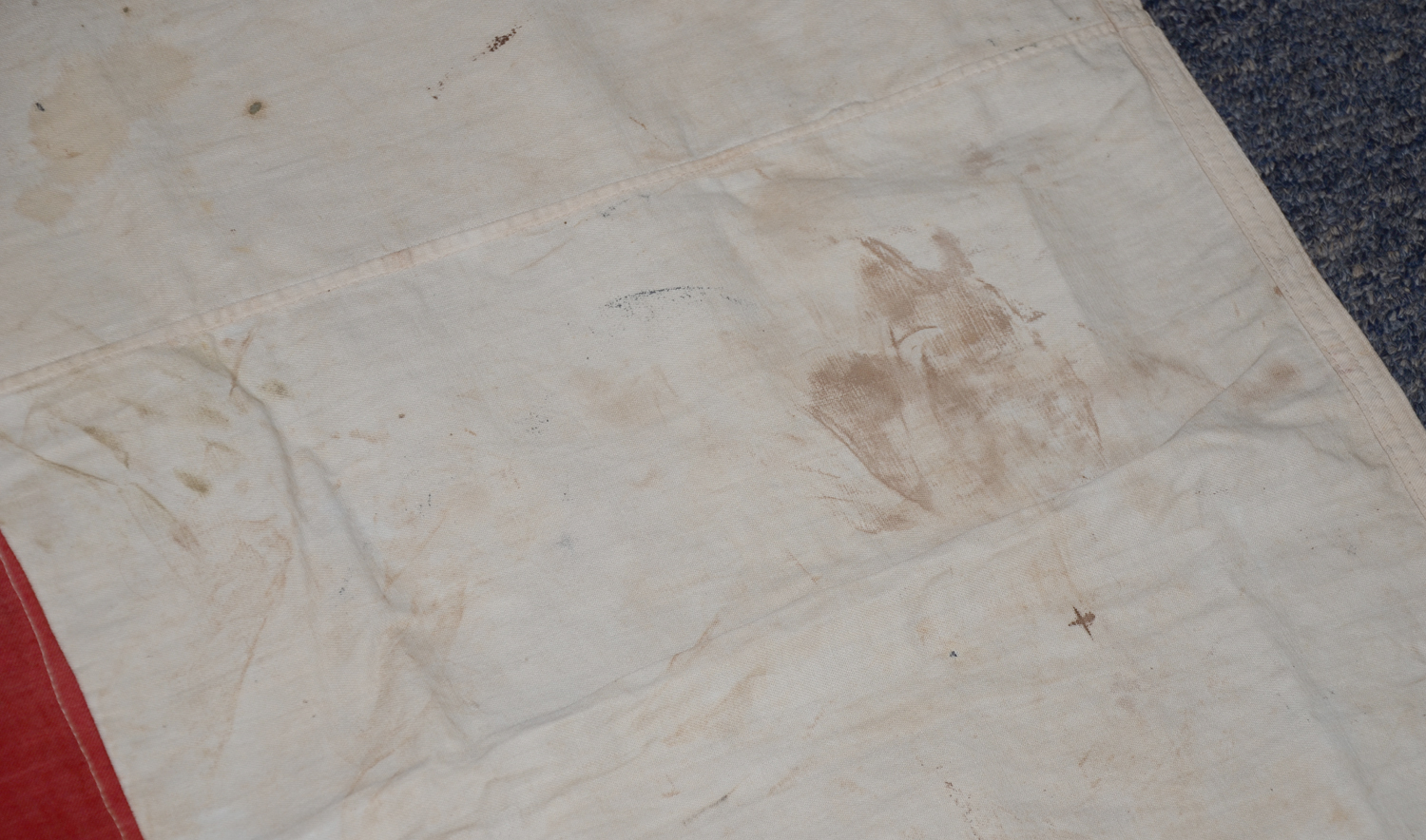
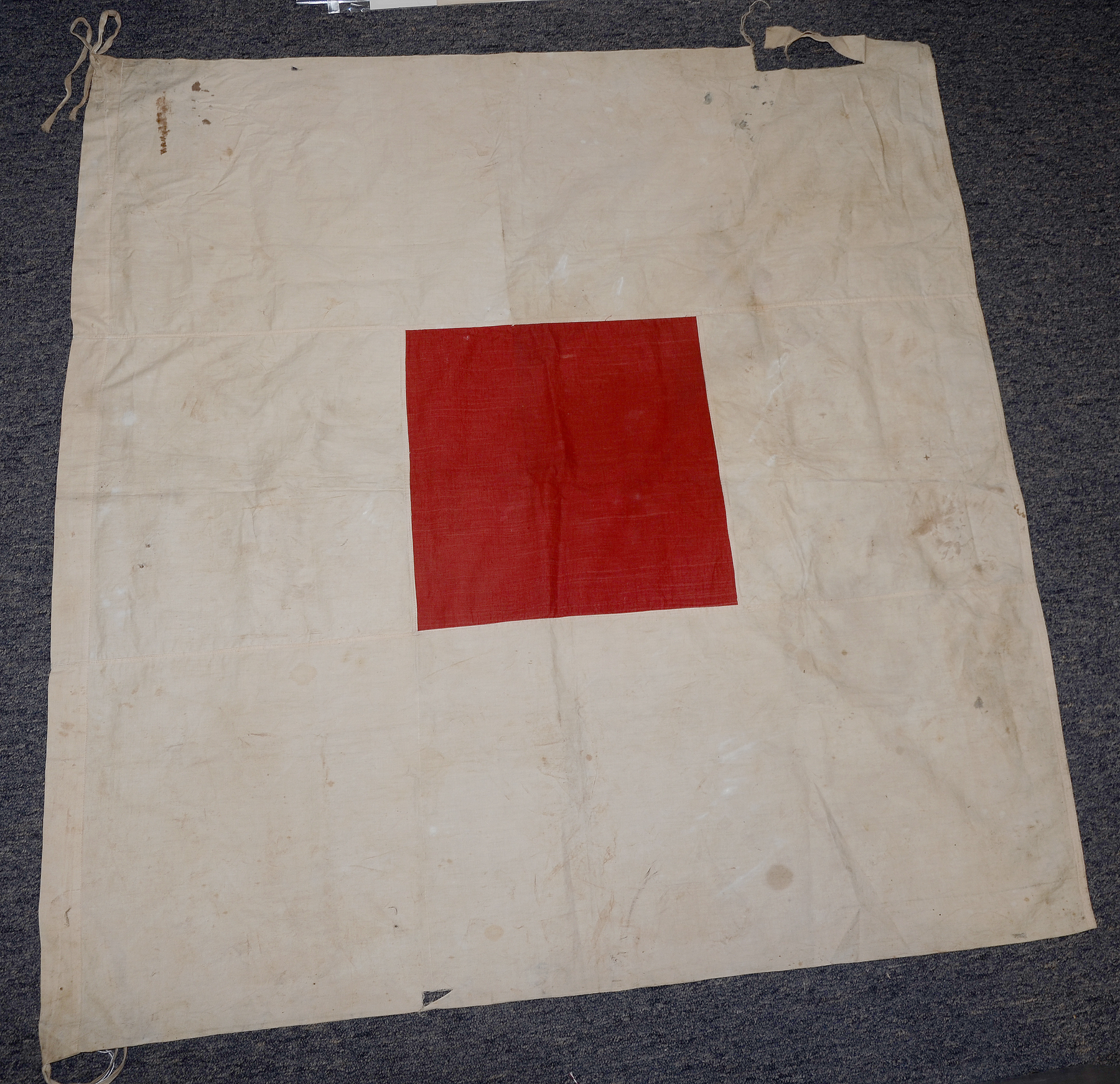
$6,975.00
Quantity Available: 1
Item Code: 169-575
Shipping: Determined by Method & Location of buyer
To Order:
Call 717-334-0347,
Fax 717-334-5016, or E-mail
This is a good example of the “Four-foot White” signal flag that, along with the “Four-foot Red,” was the most commonly used flag in the Civil War signal kit. Both are described in Brown’s “The Signal Corps, U.S.A. in the War of the Rebellion” (page 116) and elsewhere, including the Myers’ codification of the system in his 1866 signal manual. This falls within specified measurements allowing for shrinkage from age and field use, which included frequent washing according to regulations to keep the colors visible.
The flag actually measures about 46 inches on the hoist and 43 on the fly, with a 1 ¾ inch hem along the hoist and a ½ inch hem on the fly that brings it pretty close to specifications. The center red portion measures 14 ½ by 14 ½ inches, about the same proportional amount of shrinkage from the specified 16 square inches.
The flag bears an ink stamp on one edge reading “F.B. Baldwin / Philadelphia, PA.” F.B. Baldwin was a Civil War clothier in New York City who had some uniform contracts, and flags could be part of his inventory, but we have not yet found him in Philadelphia. This could be simply an omission in available records or it he could even be a later owner, or surplus dealer, but we have not been able to satisfactorily identify him.
Another marking, however, shows the flag saw some use in the 1890s: “CAPT. LYMAN” is written on it in old brown ink. Lyman does not show up in Civil War rosters, but Frank E. Lyman does show up in the Iowa National Guard as a brigade Engineer and Signal Officer in 1892. This carried the rank of major, and he was jumped from sergeant-major to the post and rank in 1892. But, in 1898 the U.S. Army Signal Corps was short-handed and recruited 17 companies of volunteers and we find Lyman commissioned a Captain in the U.S. Volunteers Signal Corps, recruiting a company in Des Moines, designated as the 12th Company. He served for one year at that rank and with the end of the war was reappointed as a lieutenant in 1899 to act as assistant to the Signal Officer of the Dept. of Matanzas and Santa Clara in Cuba.
The flag is undated, but it is very possible that the Iowa National Guard in the 1890s or the hastily assembled volunteer signal corps of 1898 used Civil War surplus signal flags. An additional bit of writing on the flag, in a different hand is “Co. G,” which likely derives from some earlier or much later use, since we do not find Lyman associated with a “G” company either in the National Guard or U.S. Volunteer service.
The Signal Corps was the brainchild of Albert Myer, a U.S. medical officer stationed in Texas in the late 1850s. He managed to interest the U.S. Army in his system of signaling as the war was about to break out and for a while was the sole U.S. signal officer. The corps expanded rapidly, however, in importance if not in ultimate size, playing a vital role in the conflict. It was somewhat ironic that one of Myers’s prewar proteges was E.P. Alexander, who was equally convincing with Confederate authorities that rapid long-distance communication was essential on the battlefield and on campaign.
The flags displays well and shows definite field use. It has ties at the upper and lower hoist corners. Others might have been present, but are gone. There are stains and dirt on the white ground, including a 2x2 inch water stain, and scattered wear spots along the hoist. There are also two tears, but no missing fabric and they close up when the flag is laid out: one is L-shaped about 1 x 1 ½ inches about 15 inches from the hoist, and another along the lower edge near the fly end about 1 ½ inches wide and running back about 5 ½ inches. This would frame up nicely and is very displayable size. [SR]
~~~~~~~~~~~~~~~~~~~~~~~~~~~~~~~~~~~
THIS ITEM, AS WITH ALL OTHER ITEMS AVAILABLE ON OUR WEB SITE,
MAY BE PURCHASED THROUGH OUR LAYAWAY PROGRAM.
CLICK HERE FOR OUR POLICIES AND TERMS.
THANK YOU!
Inquire About “FOUR-FOOT WHITE” CIVIL WAR SIGNAL FLAG WITH A POST-WAR ID
Most Popular
Historical Firearms Stolen From The National Civil War Museum In Harrisburg, Pa »
Theft From Gravesite Of Gen. John Reynolds »
Selection Of Unframed Prints By Don Troiani »
Fine Condition Brass Infantry Bugle Insignia »
featured item
IDENTIFIED FIELD-USED AND SOLDIER MODIFIED SCHUYLKILL ARSENAL MARKED HEAVY ARTILLERY ENLISTED FROCK COAT OF S.H. YAHRES, 5th PA HEAVY ARTILLERY
This Civil War Pattern 1858 uniform coat worn by a heavy artilleryman while serving as infantry has a great deal of character- good overall condition and color, but legitimate age in the darker tone of its brass buttons and slightly muted color of… (1268-543). Learn More »
site search
Upcoming Events
The shop is currently closed so that we may conduct our annual inventory. We are available by phone… Learn More »


